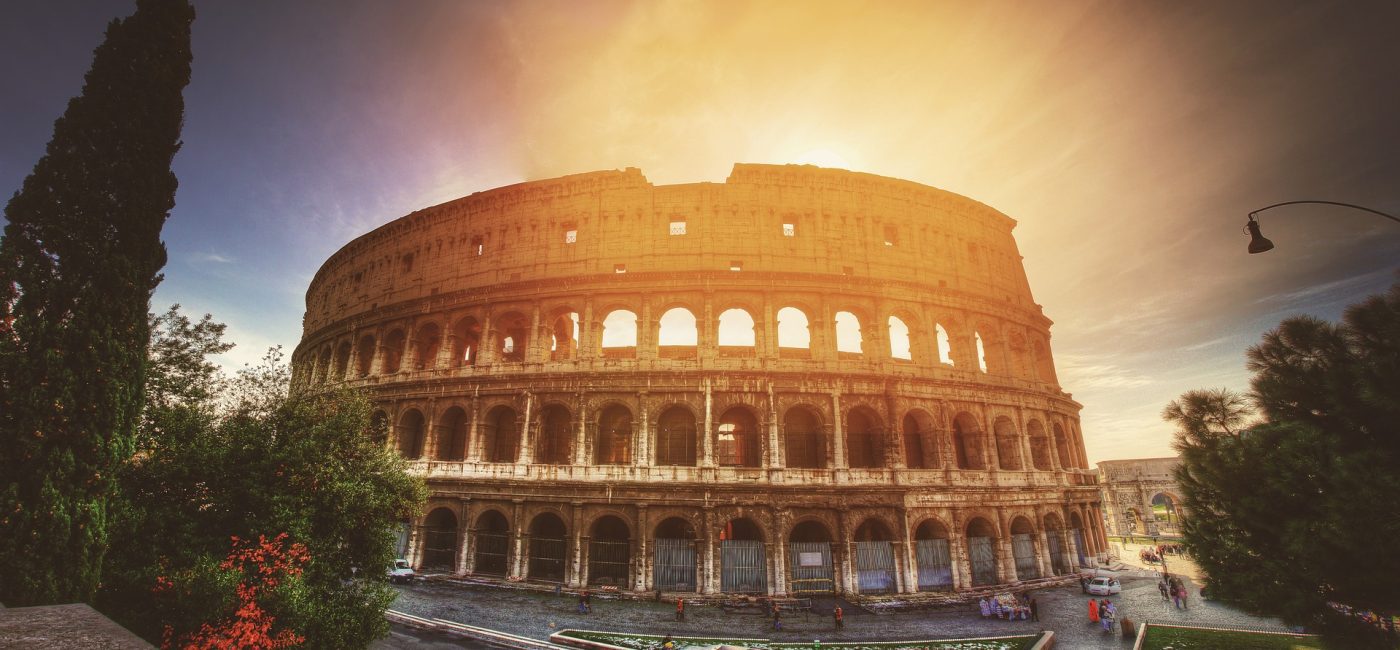Introduction:
Standing as an enduring symbol of ancient Rome’s grandeur and engineering prowess, the Colosseum is one of the most iconic landmarks in the world. This colossal amphitheatre, also known as the Flavian Amphitheatre, has a storied history that echoes through the annals of time. Join us as we unravel the fascinating tale of the Colosseum, a testament to the ambition and cultural significance of the Roman Empire.
I. Inception and Ambitious Design:
Construction of the Colosseum began in AD 70-72 under the Flavian emperors, Vespasian and his successor Titus. Located in the heart of Rome, the amphitheatre was envisioned as a grand showcase for public spectacles, including gladiatorial combat, wild animal hunts, and theatrical performances. The sheer scale of the Colosseum is a testament to the Romans’ engineering prowess, with an estimated capacity of 50,000 spectators.
II. Architectural Marvel:
The Colosseum is a marvel of ancient engineering, showcasing the innovative techniques and materials employed by Roman architects. Built using concrete, tuff, and travertine limestone, it stands as a testament to Roman mastery in architectural design. The arena’s elliptical shape was not only aesthetically pleasing but also served a functional purpose, allowing for unobstructed views from all angles.
III. Gladiatorial Combat: Blood and Entertainment:
The Colosseum is perhaps most infamous for its gladiatorial contests. These brutal combats, often involving armed combatants pitted against one another or against wild animals, were a central aspect of Roman entertainment. The audience, ranging from emperors to commoners, would gather to witness these spectacles, which were a reflection of Roman values surrounding valour, discipline, and the concept of a “good death.”
IV. Spectacles of Excess: Animal Hunts and Naval Battles:
Beyond gladiatorial combat, the Colosseum hosted a wide array of other spectacles. Exotic animal hunts, known as venationes, featured beasts from across the empire, including lions, elephants, and even crocodiles. The amphitheatre was also ingeniously flooded for mock naval battles, known as naumachiae, providing a surreal aquatic spectacle.
V. Decline and Transformation:
As the Roman Empire entered its decline, the popularity of gladiatorial combat waned. The Colosseum underwent various modifications and repurposing efforts, including the addition of small housing structures within its walls. Earthquakes, fires, and the pillaging of its stone for other constructions contributed to its gradual deterioration.
VI. Preservation and UNESCO World Heritage Status:
In the modern era, concerted efforts were made to preserve the Colosseum’s legacy. Extensive restoration work has been carried out, allowing visitors to experience the amphitheatre’s awe-inspiring grandeur and gain insight into the lives of those who once gathered within its walls. In 1980, the Colosseum was designated as a UNESCO World Heritage site, recognizing its cultural significance on a global scale.
Conclusion:
The Colosseum stands as an enduring testament to the ingenuity, cultural practices, and entertainment preferences of ancient Rome. Its walls have witnessed moments of triumph and tragedy, reflecting the complexities of Roman society. Today, as a living relic of antiquity, the Colosseum continues to captivate and inspire visitors from around the world, serving as a vivid window into the grandeur and cultural legacy of the Roman Empire.
An opportunity to own a villa with historical links to the Vatican
Welcome to Villa “La Contessa”, an enchanting sanctuary nestled in the heart of Rome. This exquisite estate offers a tranquil escape from the bustling city life, combining luxurious family living with breath-taking gardens. Steeped in history and intricately connected to the Vatican, this remarkable property complex lies just moments away from the awe-inspiring St. Peter’s Basilica, spanning an expansive 3 hectares (30,000 sq m) of land.
What truly distinguishes this estate, however, lies hidden behind an iron-cast gate—a precious secret that unveils catacombs deep beneath the grounds. These catacombs hold the remains of two Popes, known as “Two Feliks.” In 274 AD, Pope Felix I was interred there, followed by the addition of the remains of Pope Felix II in 365 AD, infamous for being an antipope. The historical significance of these catacombs has resulted in the keys to the gate being entrusted to the Vatican’s archaeological team – Read more

